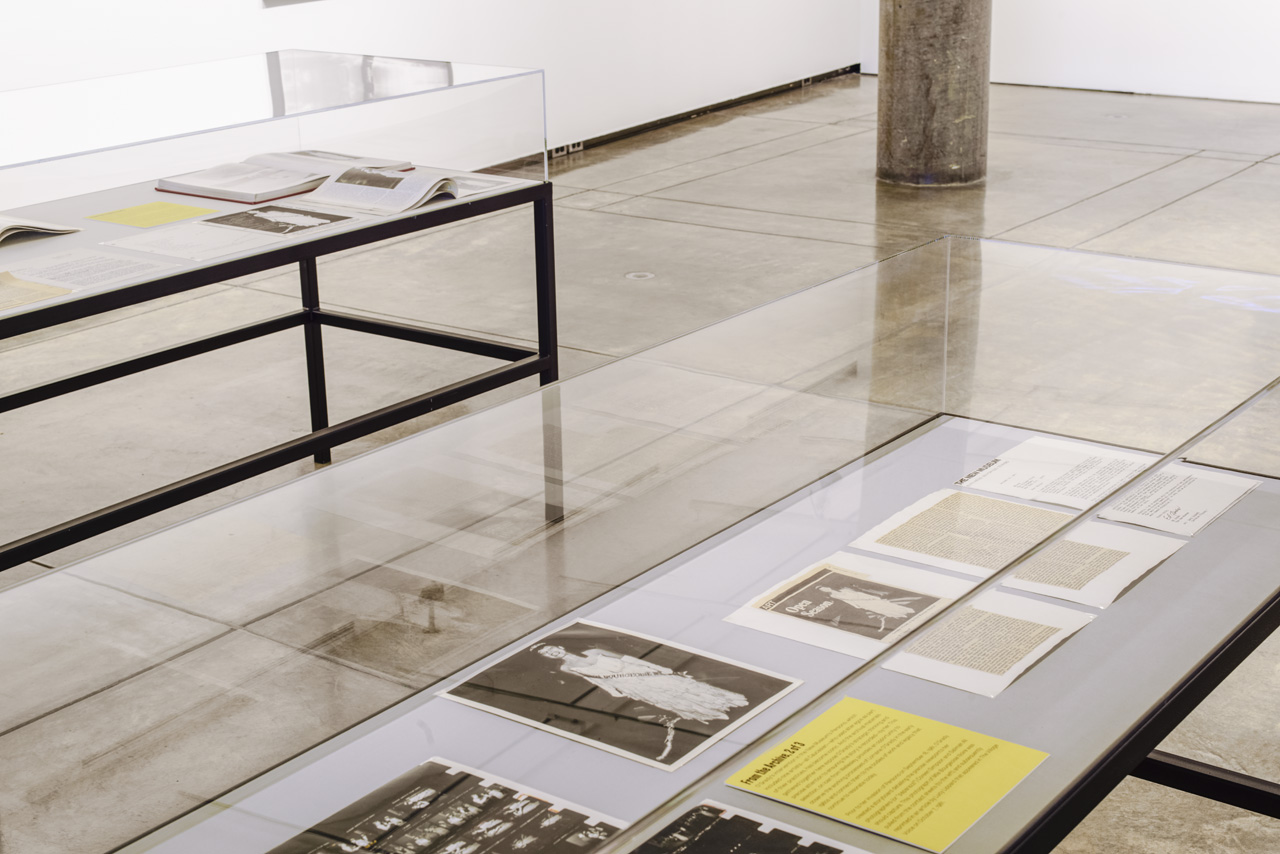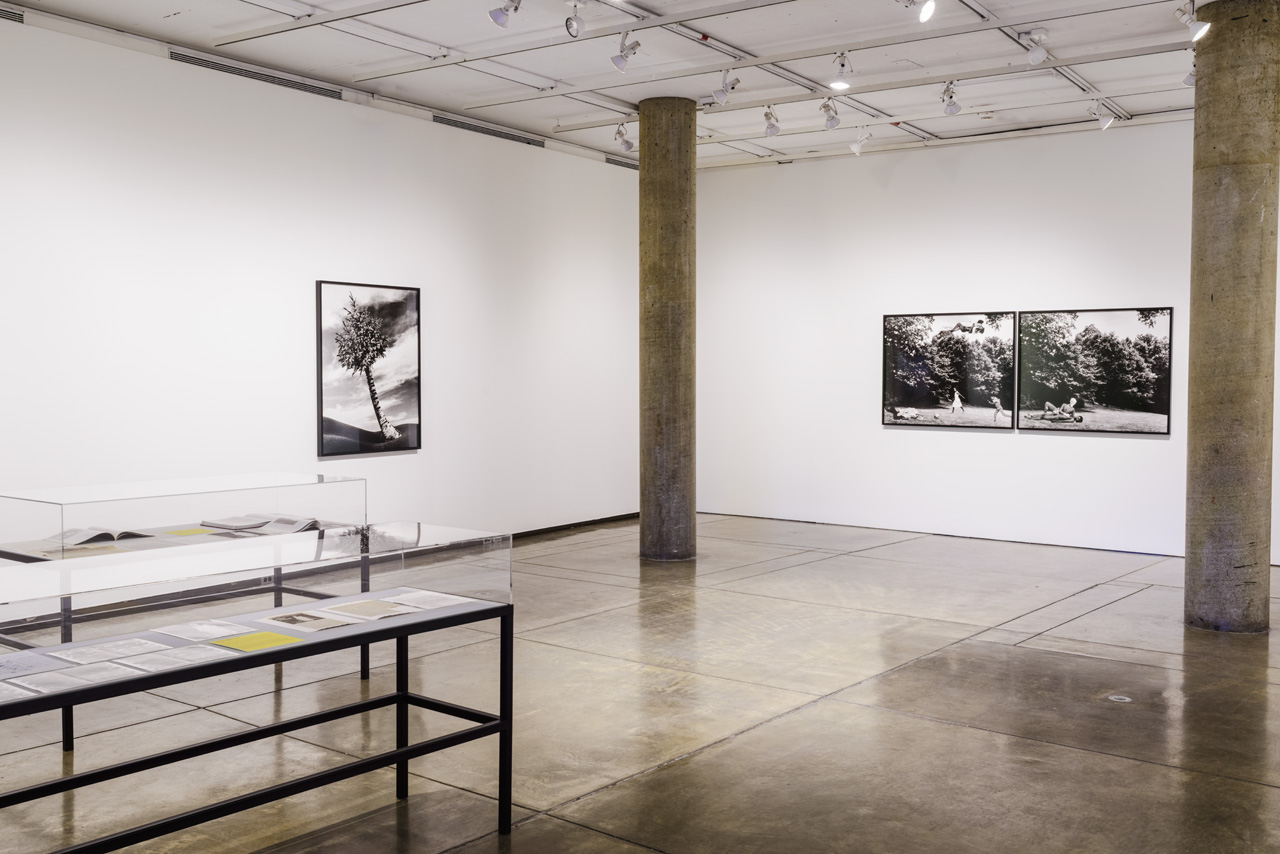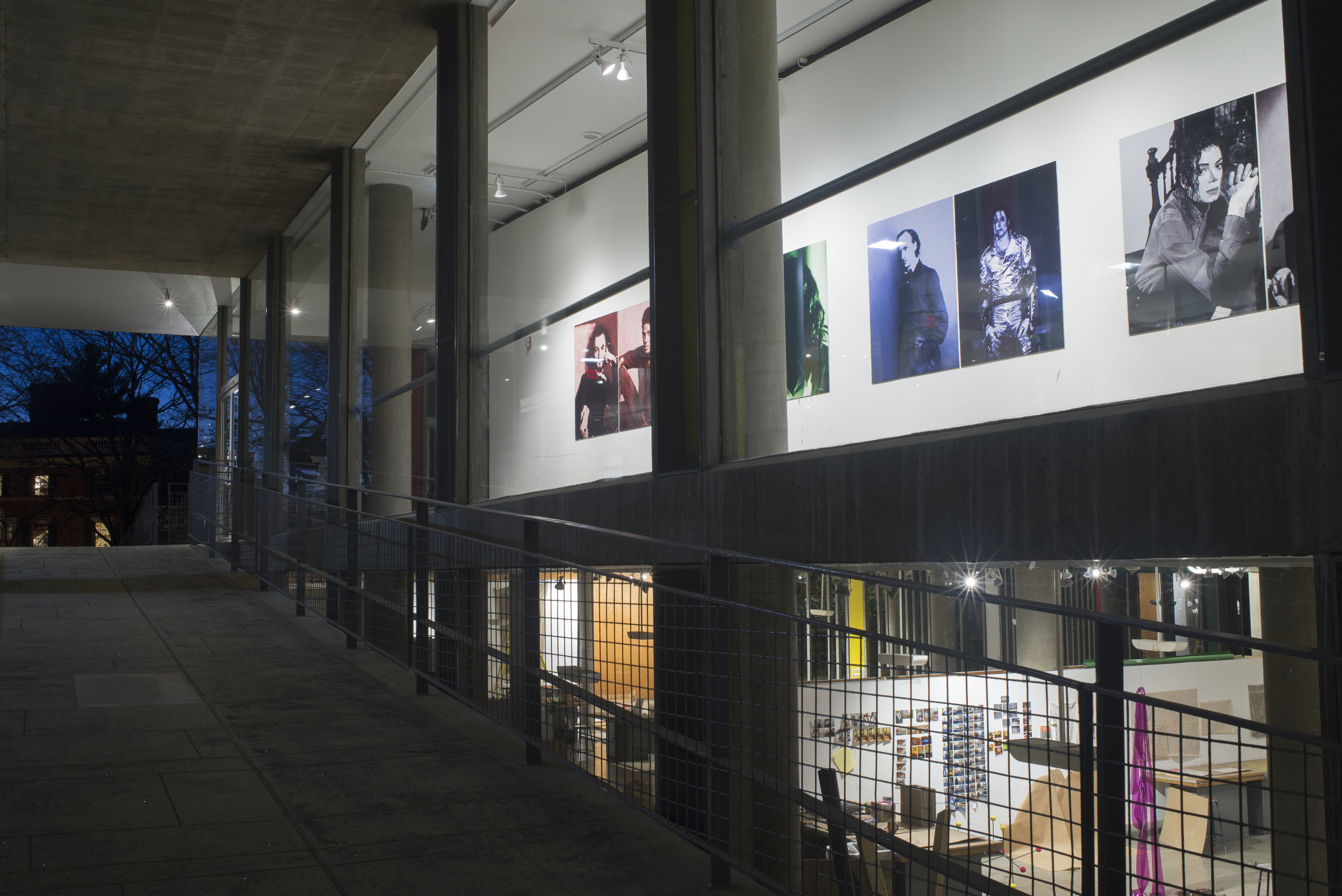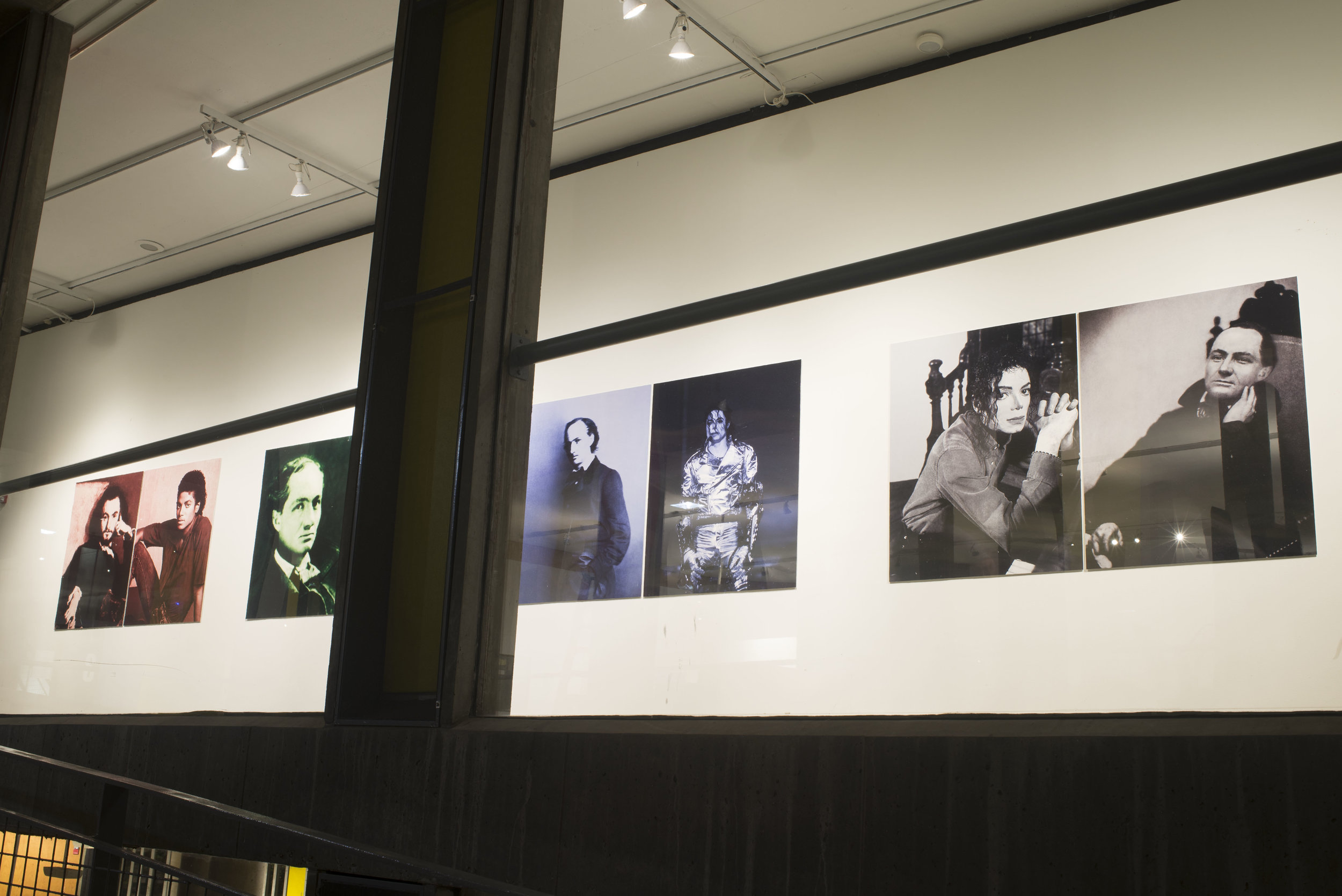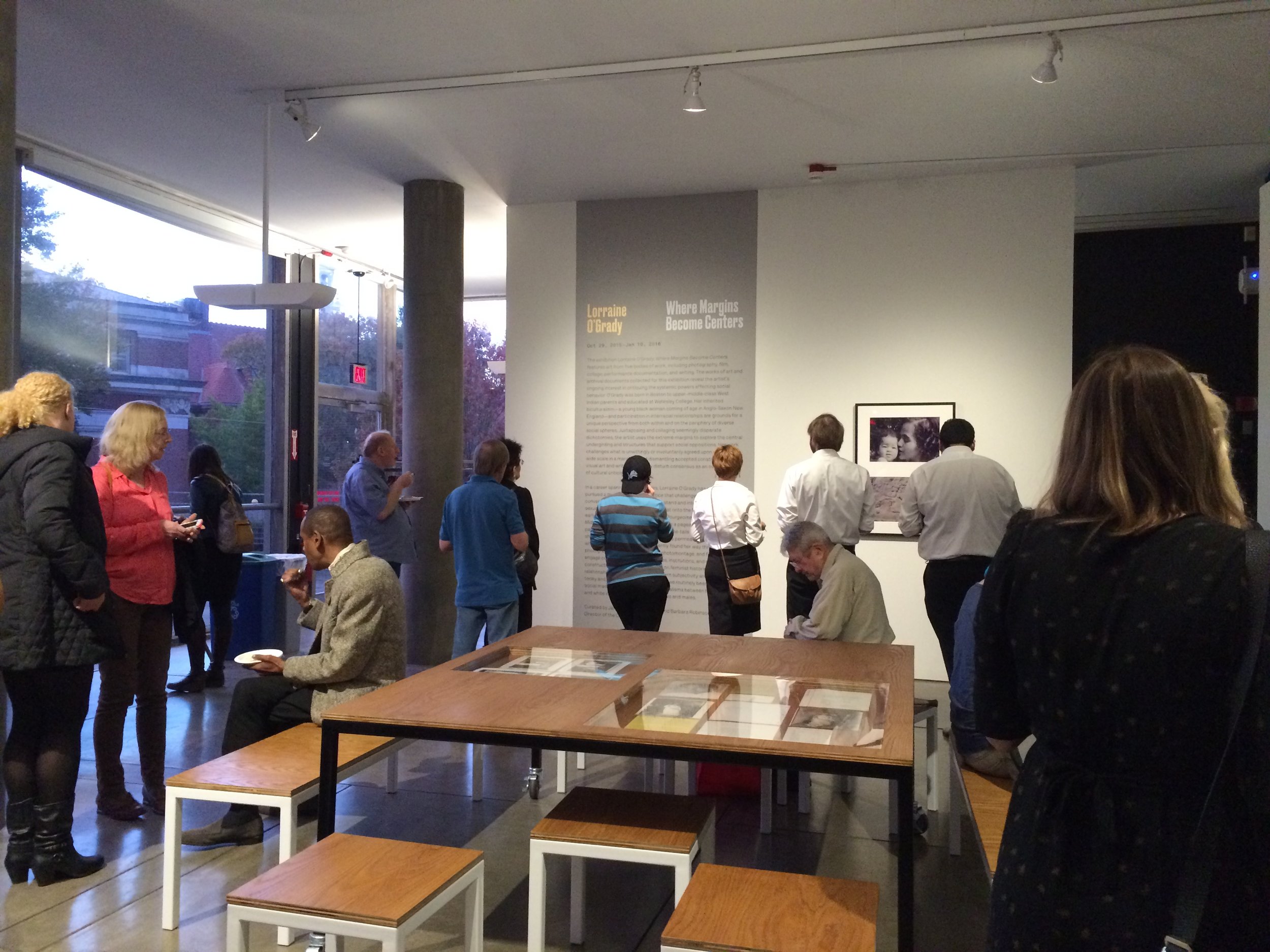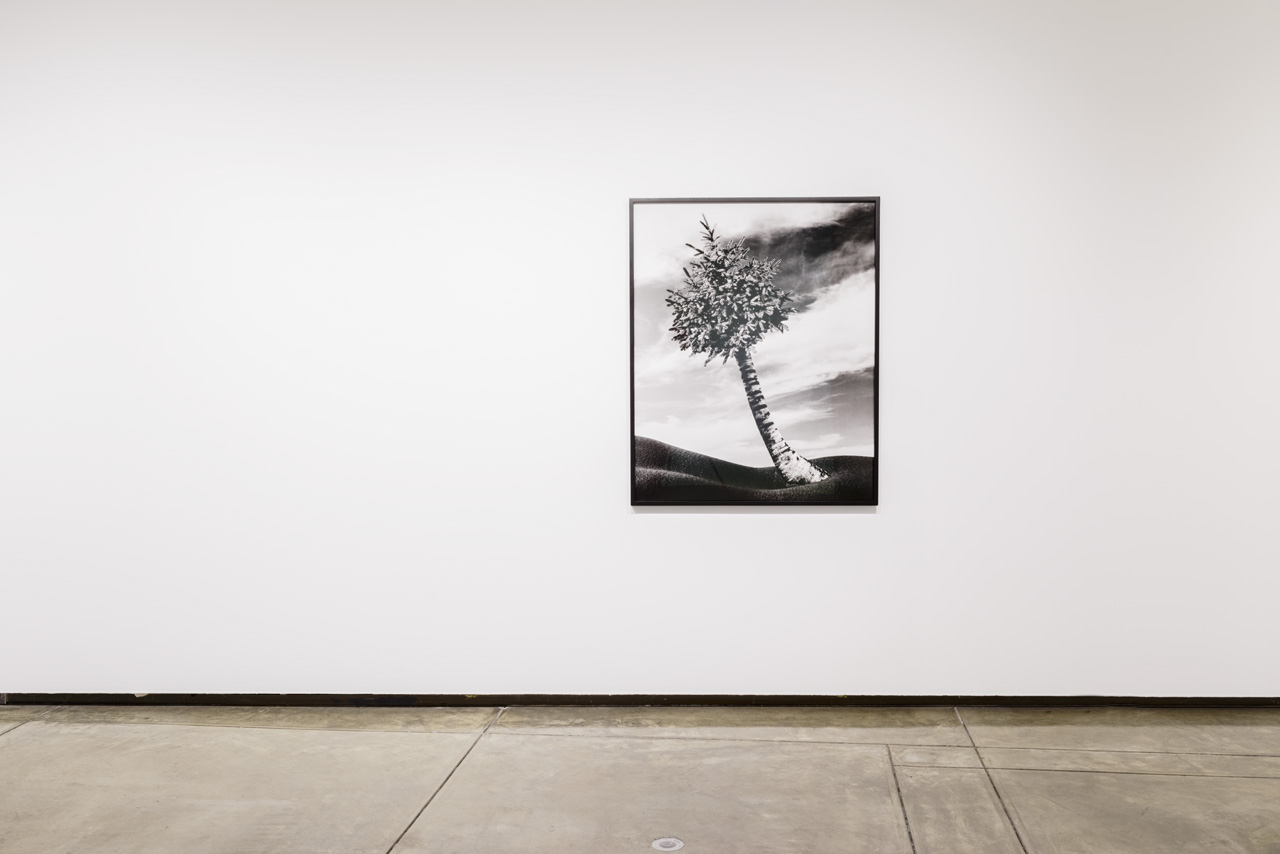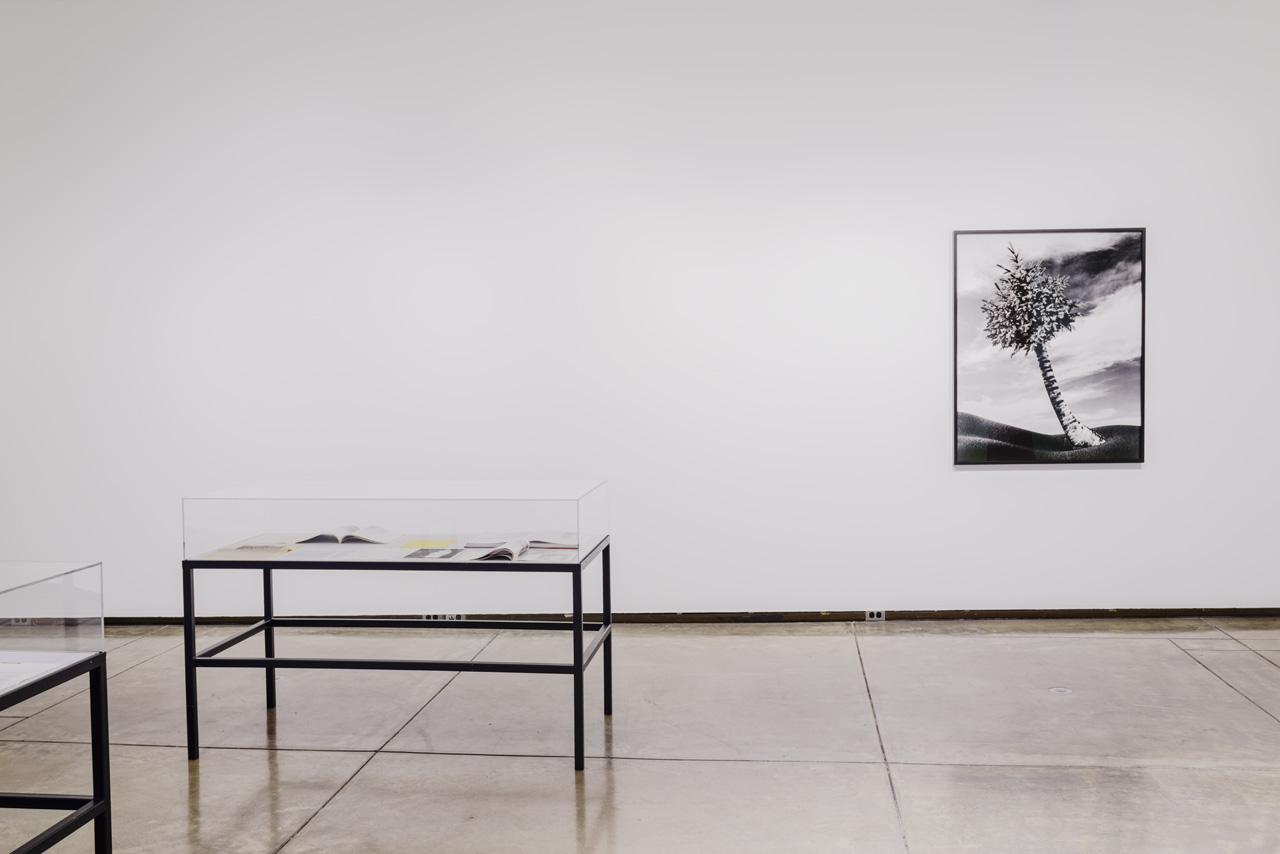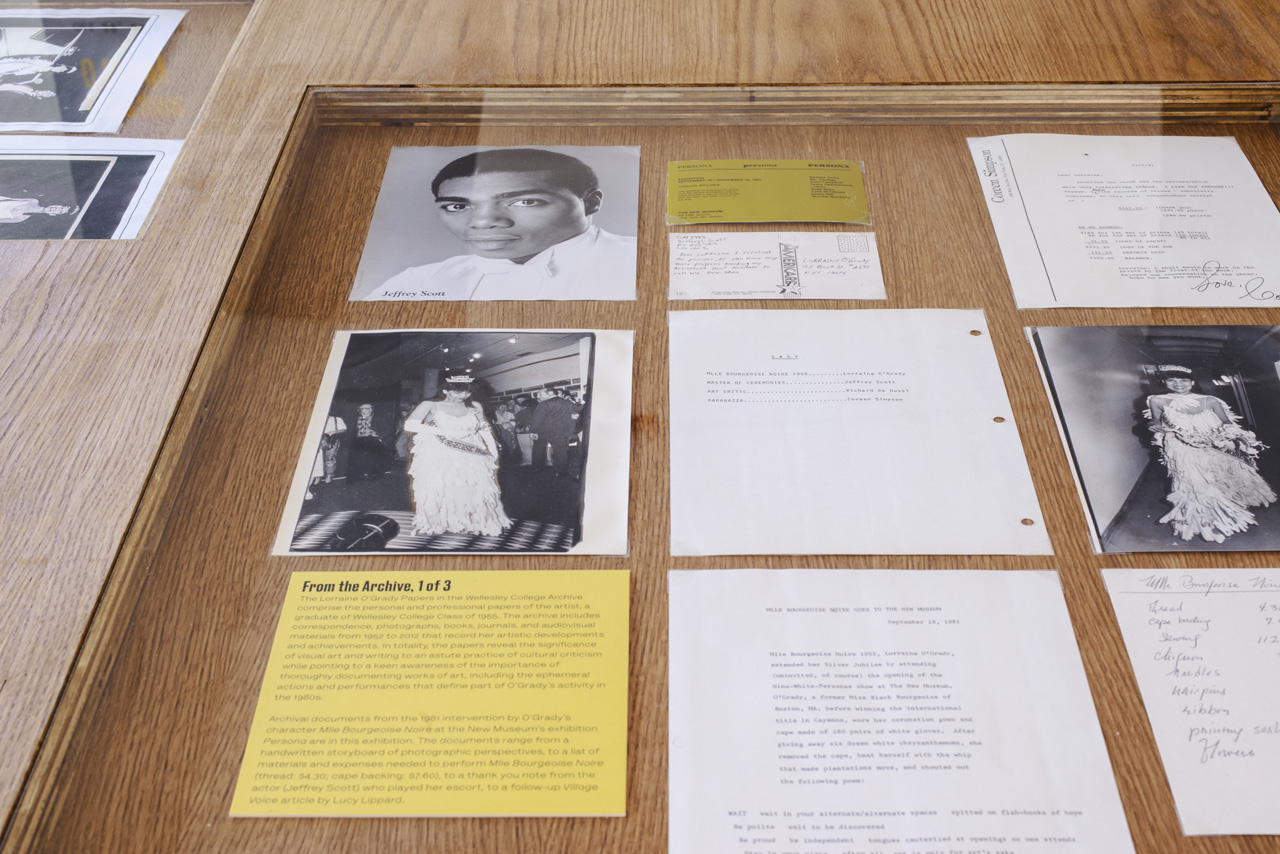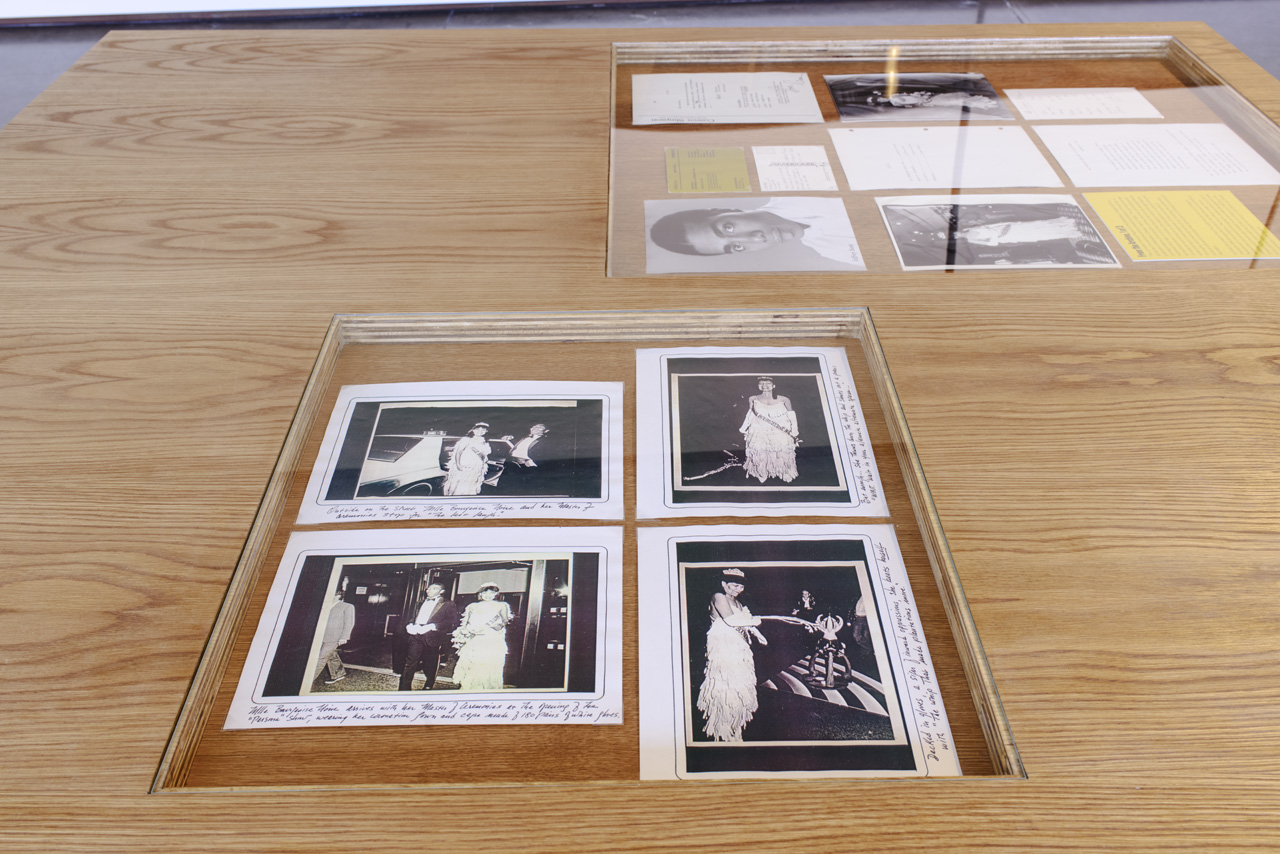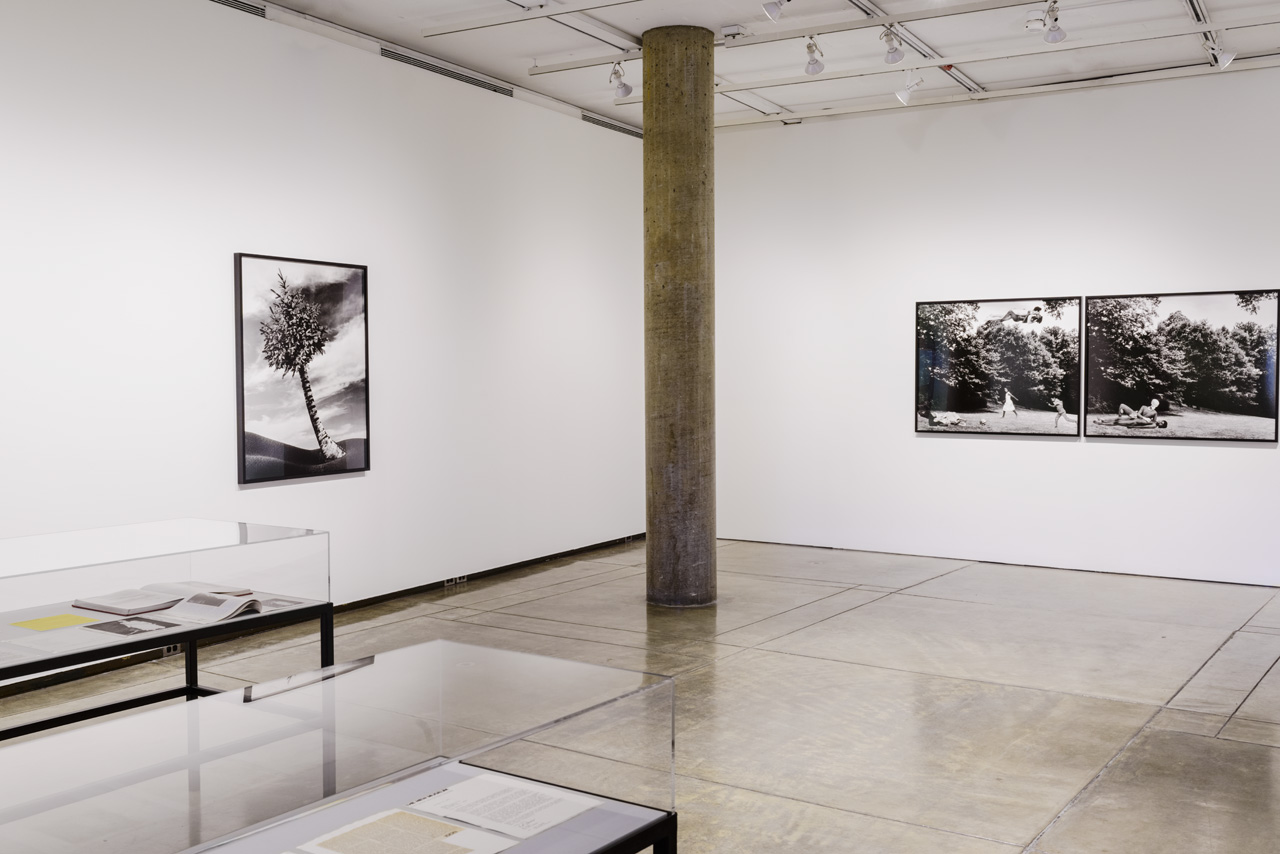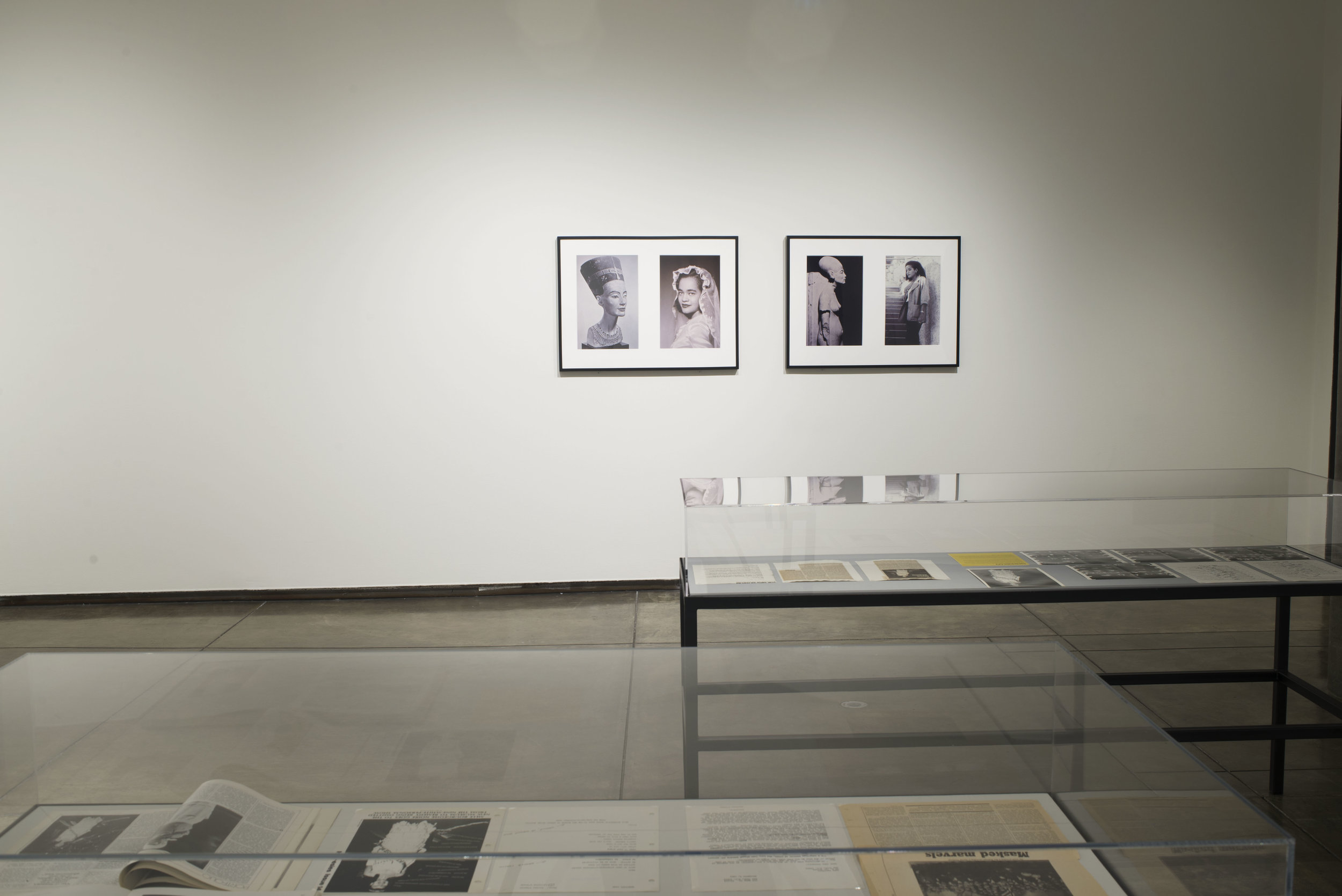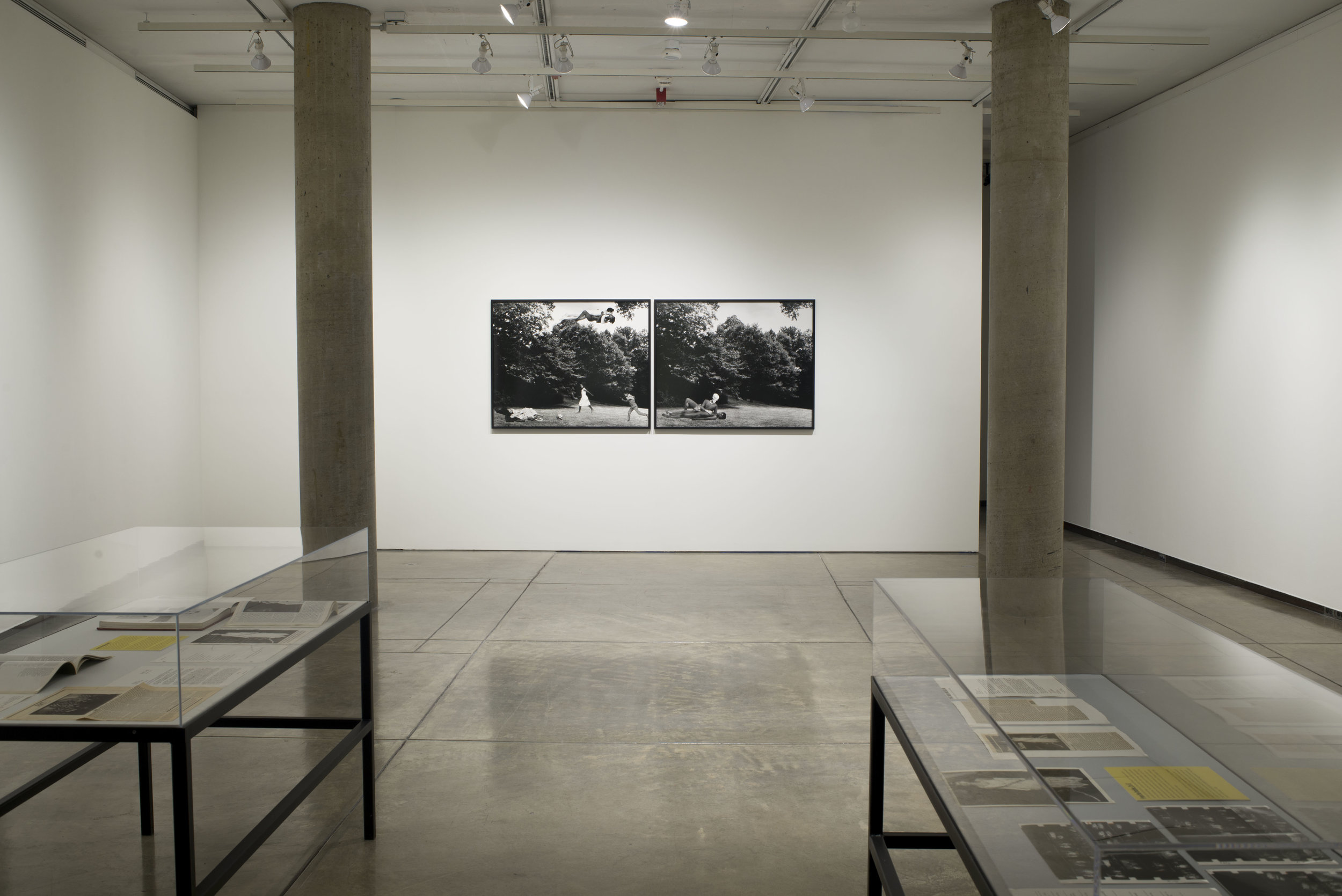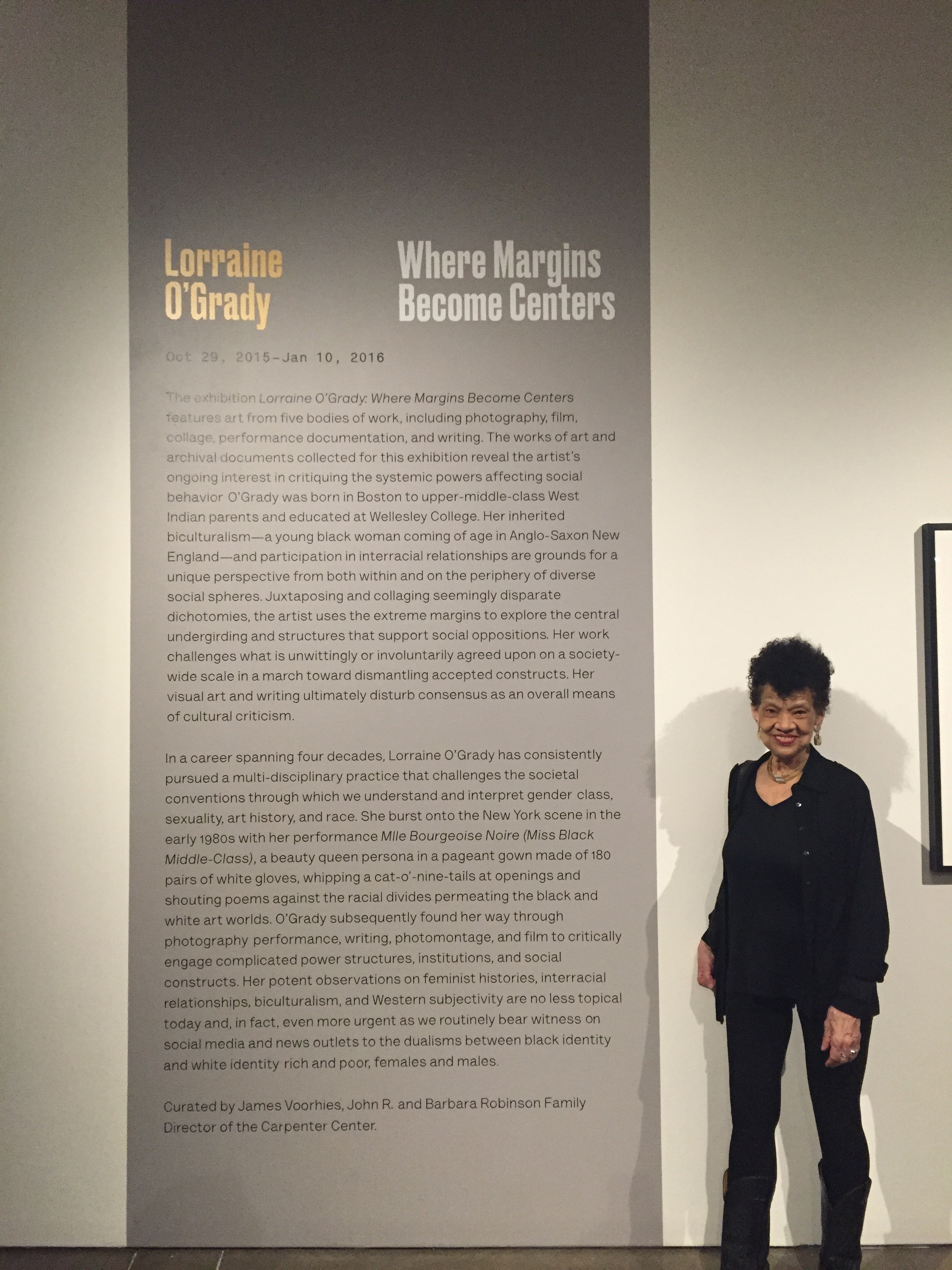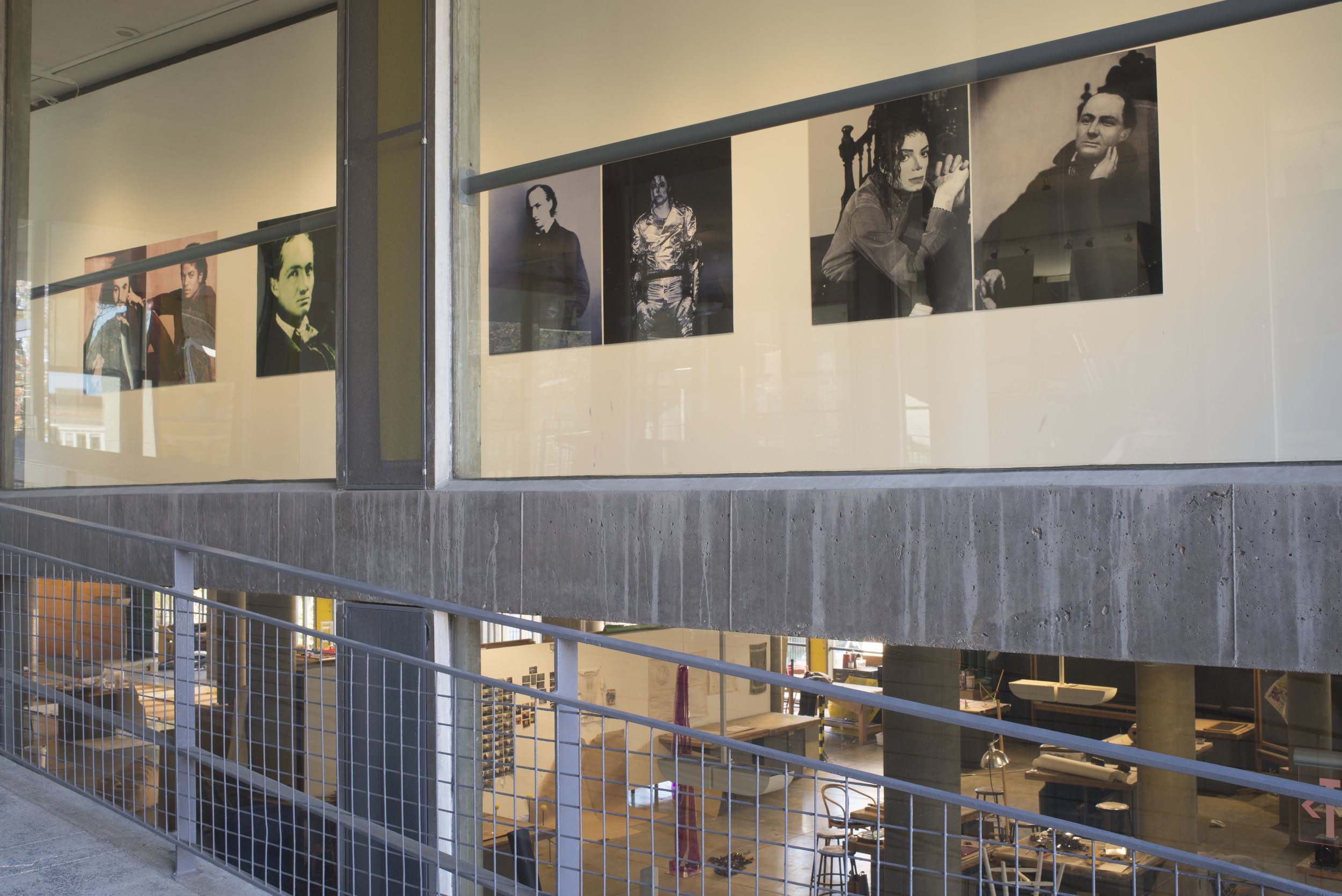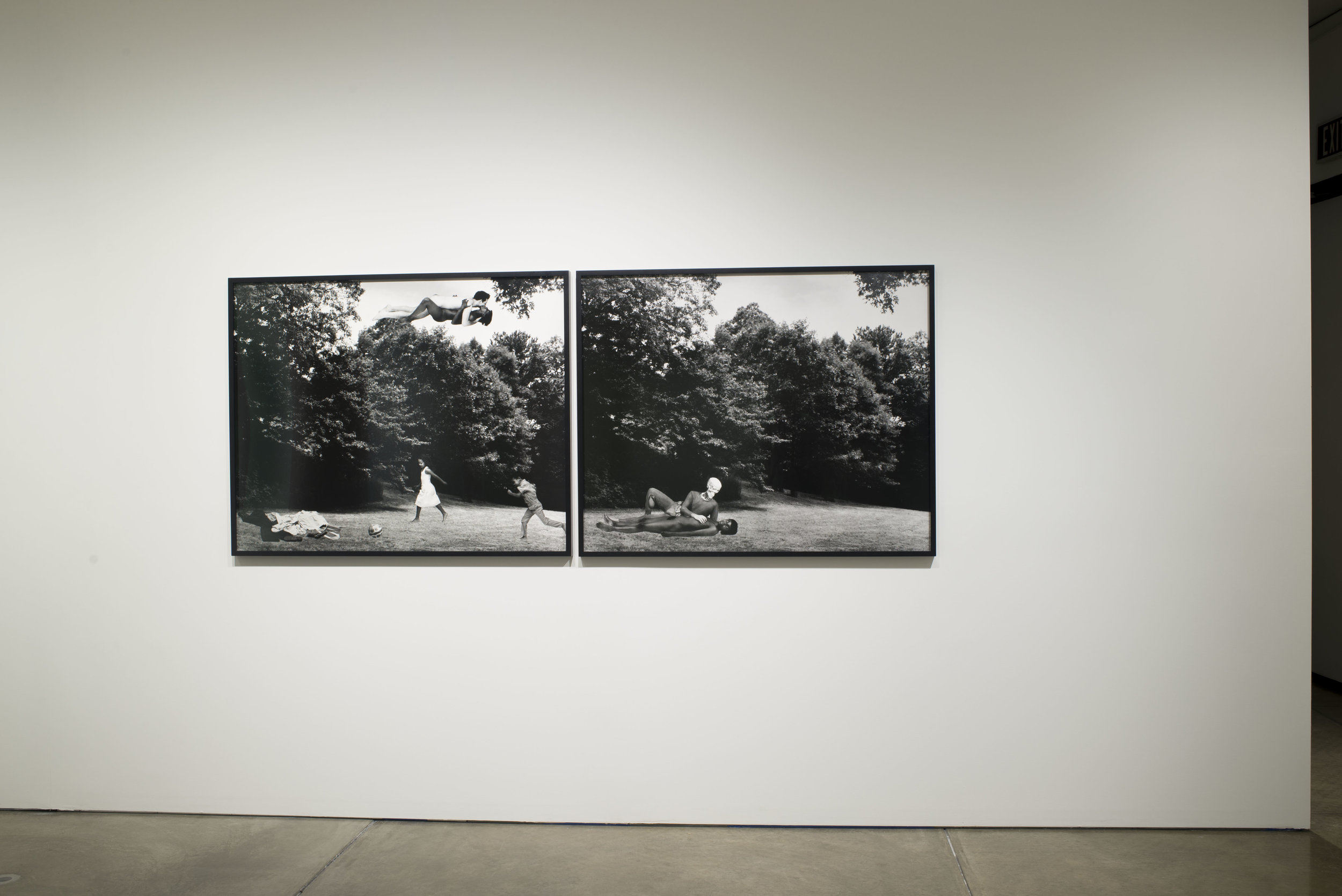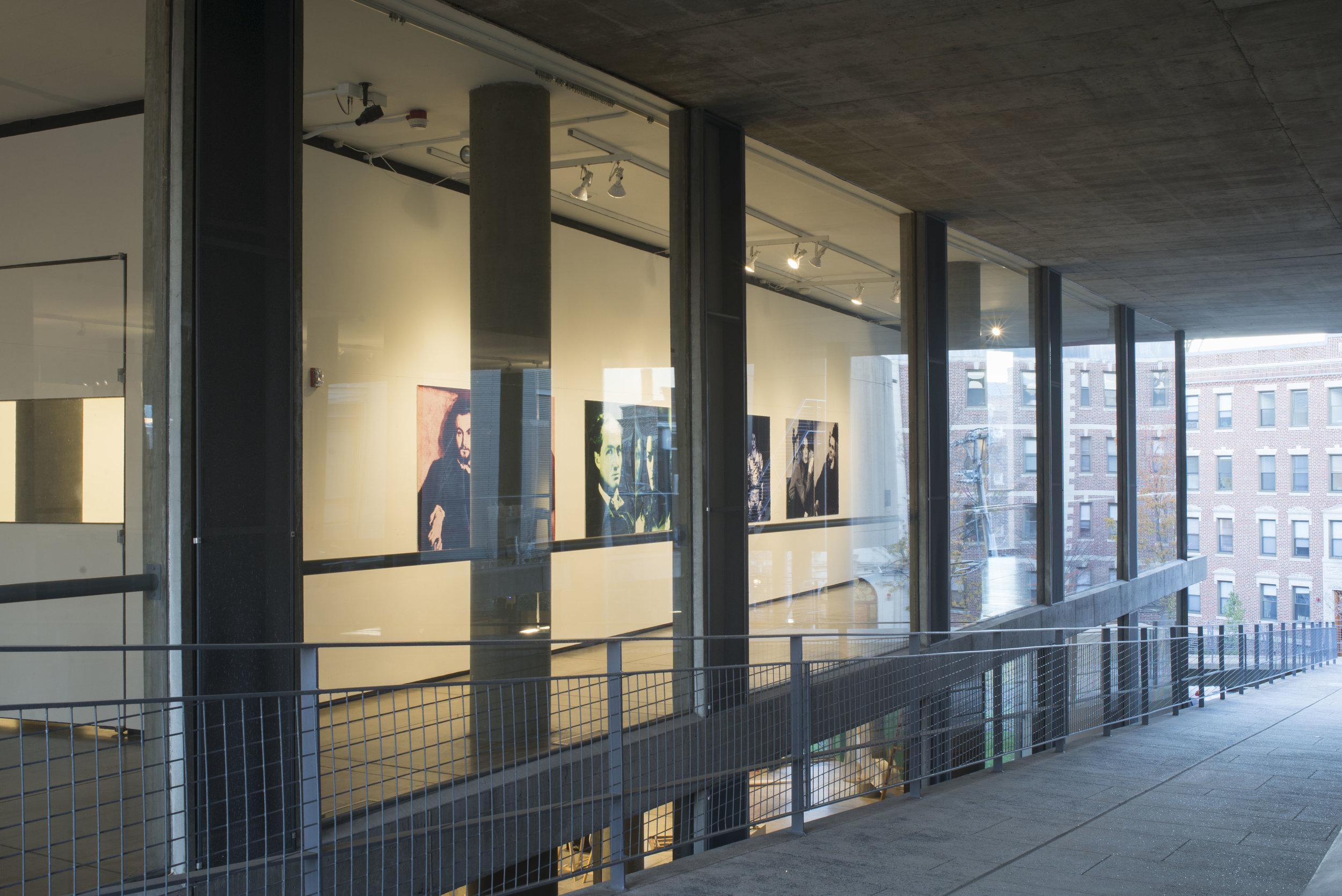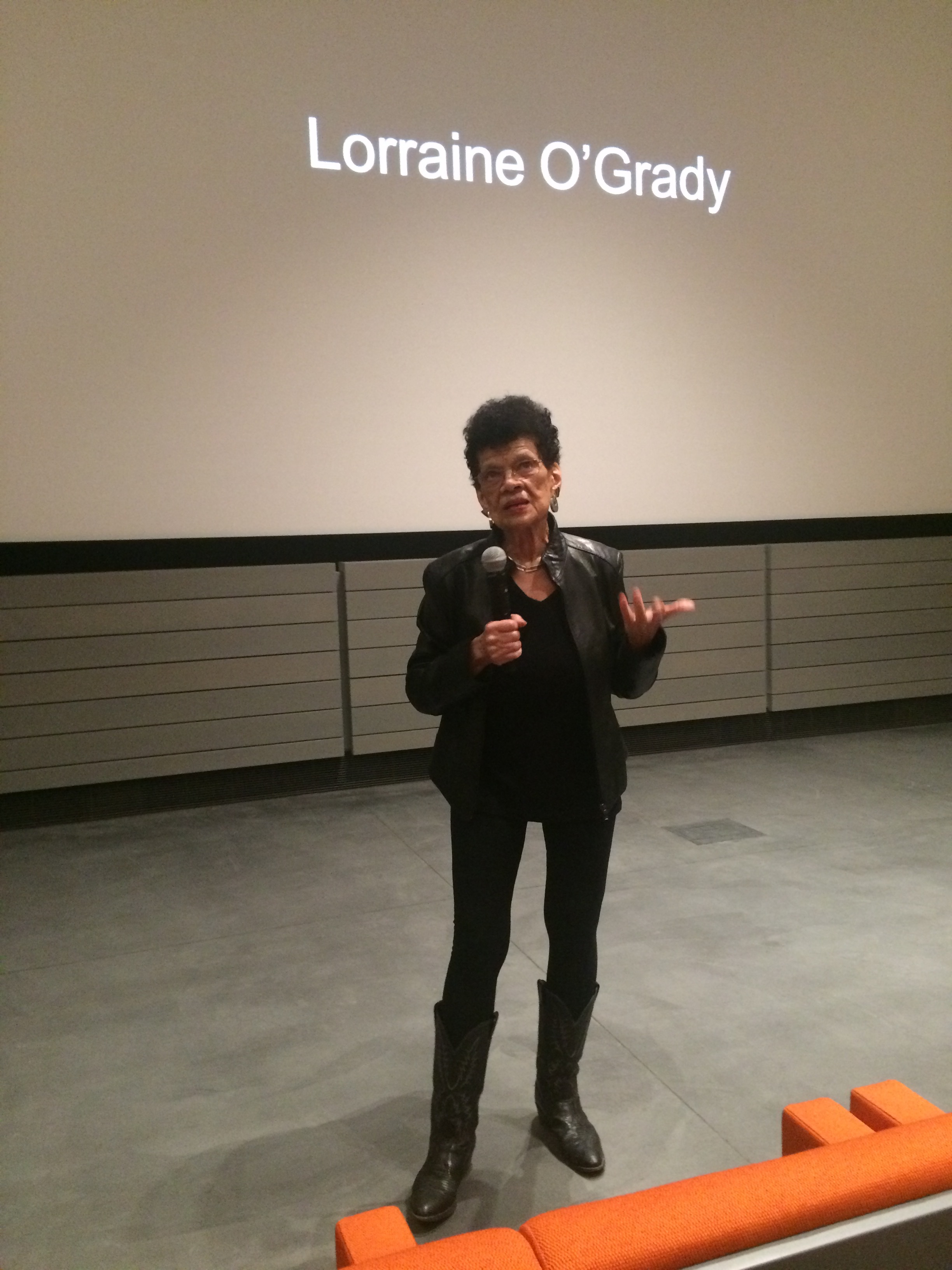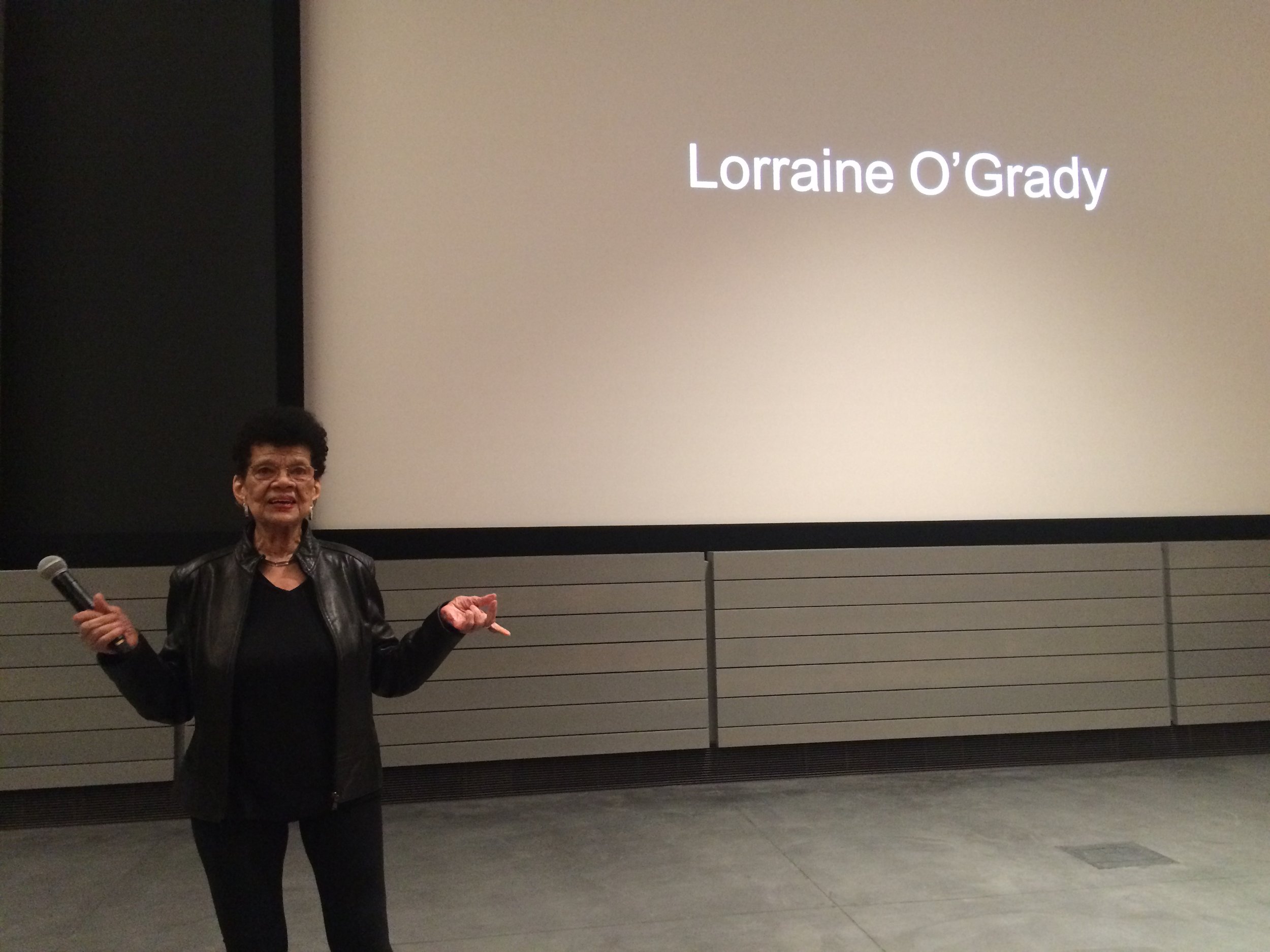Lorraine O’Grady: Where Margins Become Centers

A solo exhibition of work by Lorraine O’Grady revealing the artist’s ongoing inquiries into the systemic forces impacting social behavior.
Curated by James Voorhies
Carpenter Center for the Visual Arts
Harvard University, Cambridge, MA
October 29, 2015–January 10, 2016
Made possible with funding and staff of Harvard University’s Carpenter Center for the Visual Arts with support from the Harvard Art Museums; realized within my responsibilities as Director and Curator of the Carpenter Center for the Visual Arts
For five decades Lorraine O’Grady has consistently pursued a multidisciplinary practice in visual art and writing that challenges the societal conventions through which we understand and interpret gender, class, sexuality, art history, and race. She burst onto the New York scene in the early 1980s with her performance Mlle Bourgeoise Noire (Miss Black Middle Class), a beauty queen persona in a dress made of 180 pairs of white gloves, whipping a cat o’ nine tails at openings and shouting poems against the racial divides permeating the black and white art worlds. She subsequently found her way through photography, performance, writing, photomontage and film to engage the complicated power structures, institutions, and social constructs that guide feminist histories, interracial relationships, biculturalism, and Western subjectivity. Her potent observations are no less topical today.
The exhibition Lorraine O’Grady: Where Margins Become Centers presented art from five bodies of work including photography, film, collage, performance documentation and writing. The works exposed the artist’s ongoing interest in the systemic powers affecting social behavior. O’Grady was born in Boston to upper-middle-class West Indian parents and educated at Wellesley. Her inherited biculturalism—a young black woman coming of age in rarefied New England—and participation in interracial relationships became grounds for a unique perspective from both within and on the periphery of diverse social spheres.
Talk
November 17, 2015
Harvard Art Museums
Booklet
...



